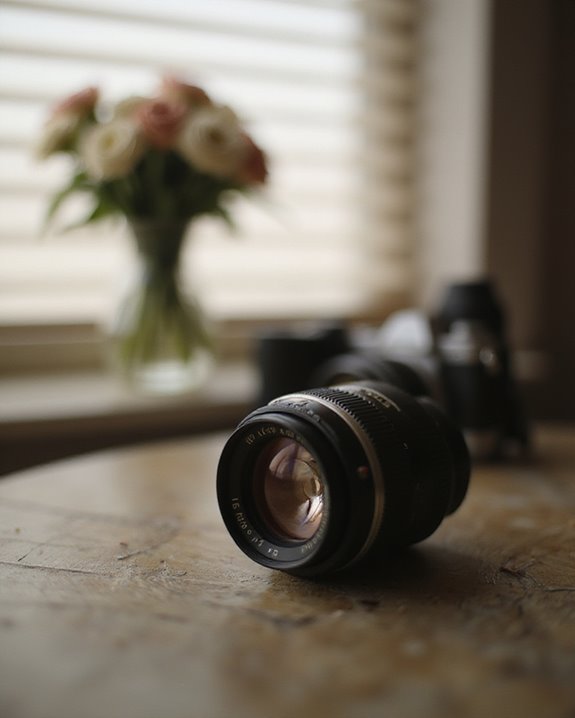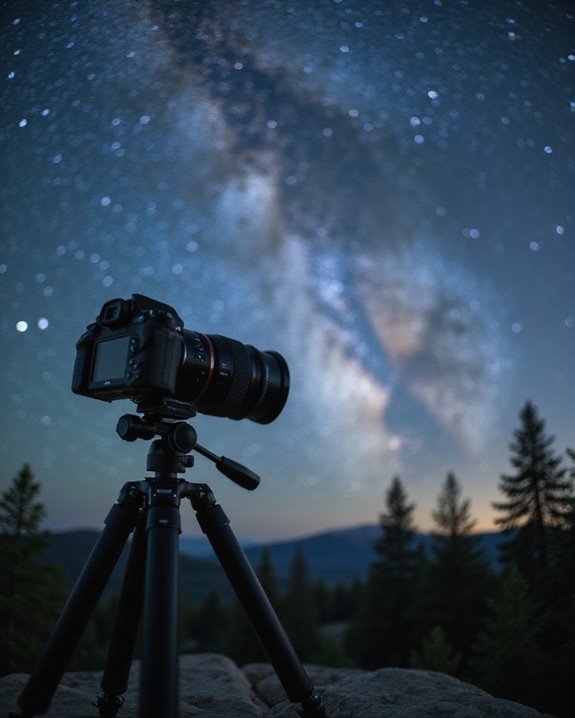Ideal car photography lenses combine focal lengths from 35mm to 200mm with wide apertures between f/1.8 and f/2.8, enabling superior sharpness and subject isolation via shallow depth of field. Prime lenses, especially 50mm and 85mm at f/1.8, deliver high-resolution detail and smooth bokeh for static shots, while 24-70mm f/2.8 zooms provide versatile framing and consistent optical quality under varied conditions. Telephoto 70-200mm lenses facilitate distant subject capture with effective image stabilization and compression. Additional autofocus and filter accessories further refine dynamic motion capture and glare control. Continued examination explores technical trade-offs inherent to different lens types for specialized automotive applications.
Key Takeaways
- Prime lenses with wide apertures like 35mm or 85mm f/1.8 deliver sharp detail and smooth background blur for static car shots.
- Versatile zoom lenses such as 24-70mm f/2.8 offer rapid focal adjustments and consistent sharpness for dynamic automotive photography.
- Telephoto lenses like 70-200mm f/2.8 enable distant shooting and motion panning with image stabilization and excellent subject isolation.
- Wide apertures around f/1.8 improve low-light performance, produce enhanced bokeh, and maintain edge-to-edge sharpness on vehicles.
- Autofocus technologies and lens accessories like circular polarizers and neutral density filters enhance clarity, tracking, and creative control.
Understanding Prime and Zoom Lenses for Automotive Photography
In automotive photography, prime and zoom lenses present distinct technical advantages and limitations that influence their applicability to various shooting scenarios. A prime lens, exemplified by the Nikon NIKKOR Z 50mm f/1.8 S, delivers superior sharpness and a wide aperture lens opening at f/1.8, facilitating enhanced background separation and precise detail capture in static shots such as badges or wheel close-ups. In contrast, zoom lenses, such as the 24-70mm f/4, offer variable focal lengths within a single unit, supporting dynamic compositions and rapid adjustments for moving subjects. Aperture lens speed differences—f/1.8 for primes versus f/4 for zooms—impact depth of field and low-light performance. Consequently, prime lenses excel in controlled environments requiring sharpness and shallow depth, while zoom lenses provide versatile focal length adaptability essential for capturing unpredictable automotive action. Additionally, multi-coated optics in lenses help minimize flare and ghosting, which is especially beneficial when photographing reflective car surfaces in varying lighting conditions.
Advantages of 50mm Prime Lenses in Car Photography
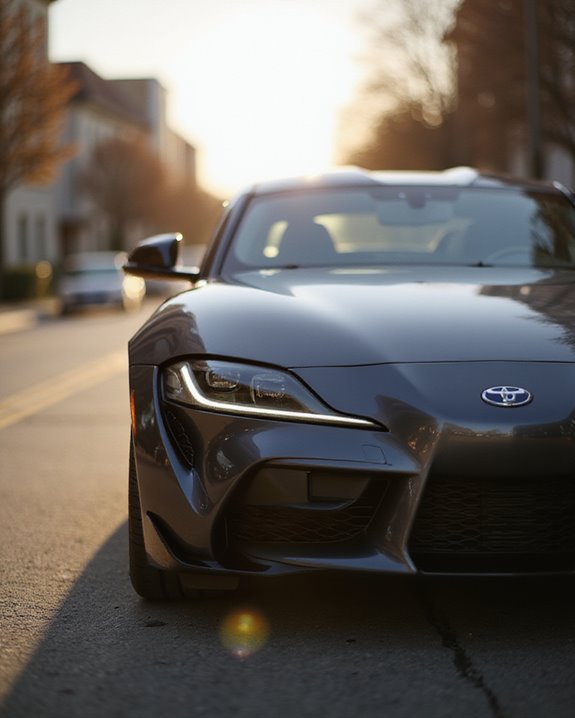
The 50mm prime lens demonstrates a balanced combination of optical characteristics and ergonomic design that enhances its suitability for automotive photography compared to zoom counterparts. This fixed lens offers a natural focal length that replicates human eye perspective, preserving accurate car proportions without distortion. On crop sensor cameras, it provides an effective focal length near 85mm, facilitating tighter framing of vehicles from a distance. The wide F1.8 aperture enables a shallow depth of field, producing excellent image quality with pronounced subject isolation and smooth bokeh, critical for emphasizing car details against blurred backgrounds. Additionally, the lens’s compact, lightweight construction reduces operator fatigue during extended shoots, supporting handheld versatility. Affordably priced under $200, the 50mm prime lens combines superior sharpness at wide apertures with efficient autofocus, making it a technically sound choice for detailed automotive imagery.
Versatility of the 24-70mm Zoom Lens for Dynamic Shots
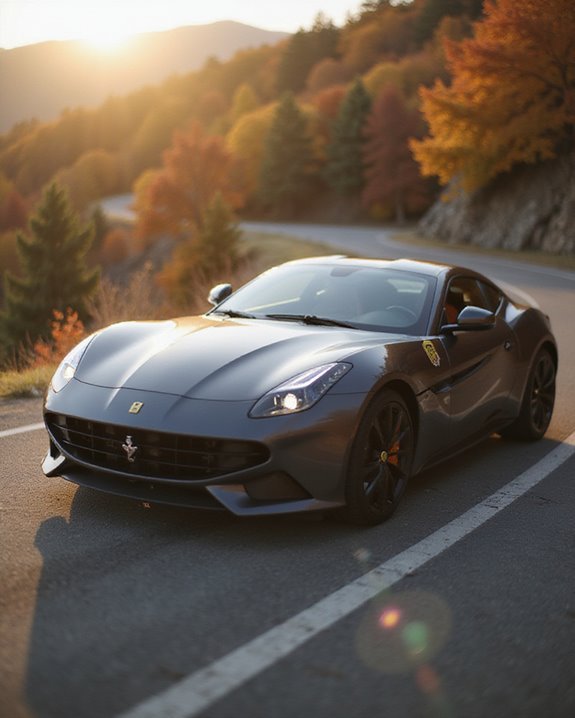
Zoom lenses with focal ranges spanning 24-70mm demonstrate exceptional adaptability in automotive photography, particularly for dynamic scenarios requiring rapid reframing between wide-angle and moderate telephoto perspectives. The 24-70mm lens for car photography efficiently supports panning shots, enabling quick shifts from 24mm wide-angle captures of moving vehicles to 70mm tighter compositions without lens changes. Its constant f/2.8 aperture facilitates superior low light performance, permitting faster shutter speeds and enhanced subject-background separation during night rollers or dim conditions. Advanced image stabilization in models like the Canon RF 24-70mm F/2.8 IS maintains sharpness in high-speed panning, allowing creative motion blur while preserving focus. The lens’s versatility accommodates unpredictable action, effectively covering environmental and detailed dynamic shots. Additionally, high-quality optics with Super Spectra Coating reduce ghosting and flare, further improving image clarity. Consequently, it serves as a primary, technically proficient choice for both novice and professional car photography applications.
When to Use Telephoto Lenses Like 70-200mm
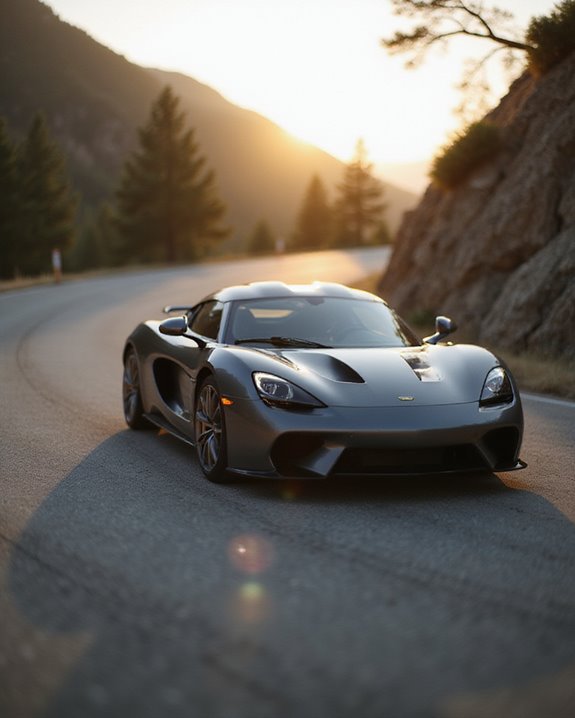
Telephoto lenses with focal lengths ranging from 70mm to 200mm demonstrate significant advantages for automotive photography under conditions requiring extended reach and subject isolation. These lenses for car photography, exemplified by the Canon RF 70-200mm F/2.8 IS, offer a longer focal length that enables photographers to capture distant subjects, such as vehicles at motorsport events, without compromising image sharpness. The best lens in this category functions as a staple lens by providing focal length flexibility and effective background compression, which enhances subject isolation through shallow depth of field. Image stabilization integrated into models like the Canon RF supports sharper panning shots of moving cars. Consequently, the 70-200mm telephoto lens is ideal for scenarios demanding precise framing from a distance and superior background control, solidifying its role as an essential component in automotive photography gear.
Enhancing Image Quality With Wide Aperture Lenses
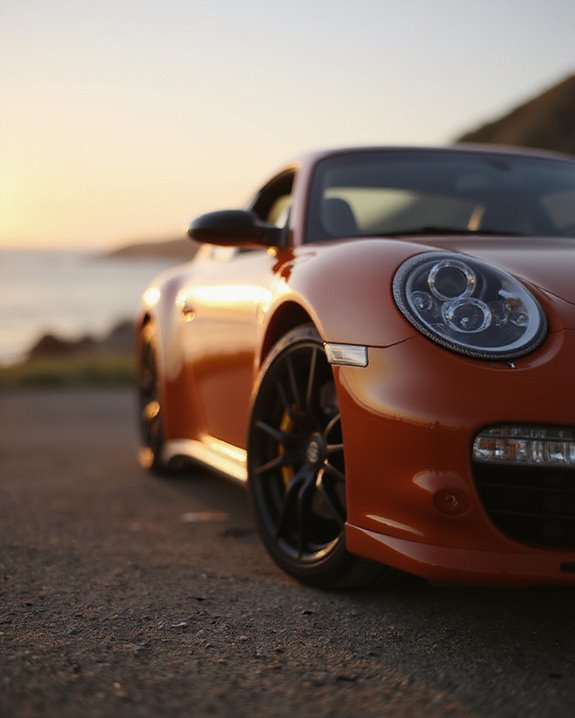
How do wide aperture lenses contribute to image quality enhancement in automotive photography? Wide aperture lenses, particularly prime lenses with apertures around f/1.8, such as the Nikon Z 50mm f/1.8 S, deliver superior sharpness and significant background separation. This characteristic allows vehicles to stand out distinctly against blurred environments, enhancing subject isolation. The lens for the Z supports low-light performance by enabling lower ISO settings, thereby reducing noise and improving image clarity during night or indoor shoots. Compared to zoom lenses, the best camera lenses with wide apertures produce enhanced bokeh effects, emphasizing car details like badges or wheels while minimizing background distractions. In scenarios requiring one lens solution, prime lenses with wide apertures provide consistent optical quality and dynamic visual impact, making them ideal choices for professional automotive photography setups. Additionally, lenses with extreme edge-to-edge sharpness ensure that every part of the vehicle remains crisp and detailed across the frame.
Autofocus and Lens Features Essential for Capturing Motion
Autofocus systems integrated within camera lenses play a vital role in capturing vehicles in motion with high fidelity and sharpness. Canon RF lenses, incorporating dual-pixel CMOS AF technology, demonstrate superior vehicle tracking capabilities, facilitating precise focus retention on accelerating or turning cars. The RF 24-70mm F/2.8 IS lens exemplifies advanced build quality, featuring built-in image stabilization that compensates for motion blur at reduced shutter speeds during panning. Compared to standard kit lens autofocus, RF lenses deliver substantially faster response times, as evidenced by the RF 50mm F/1.2’s rapid focus acquisition, essential for dynamic automotive scenarios. Ideal autofocus tracking modes maintain consistent focus across varying distances, enhancing the utility of the best camera setups in automotive photography. These features collectively enable sharp, motion-free captures, critical for high-performance vehicle tracking in diverse shooting conditions.
Recommended Lens Accessories for Car Photography
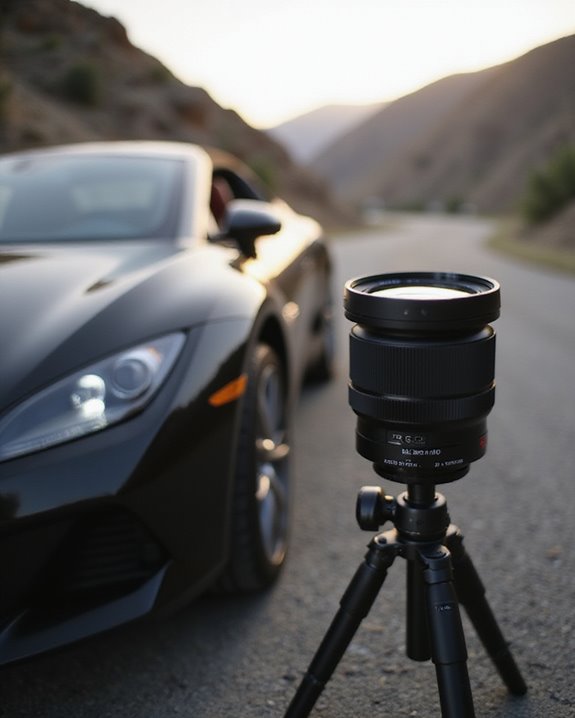
Recommended lens accessories for car photography greatly enhance image quality and operational versatility, addressing challenges posed by reflective surfaces, variable lighting, and motion dynamics. A circular polarizer filter would recommend greatly improving image clarity by reducing reflections on the entire car’s glass and paint surfaces; for example, 43mm polarizers complement Canon RF lenses effectively. Neutral density (ND) filters control light intake, enabling slower shutter speeds to capture motion blur without overexposure, which I’ve used extensively in dynamic shots. Additionally, combined polarizer-ND filters facilitate simultaneous reflection control and exposure adjustment, optimizing video capture. Lens hoods reduce lens flare under direct sunlight, preserving contrast and sharpness in outdoor environments. Step Up Rings adapt smaller lens threads to standard filter sizes, enhancing accessory compatibility. Each lens accessory would enhance looking photos’ technical fidelity and visual depth in automotive contexts.
Selecting Lenses Based on Shooting Environment and Style

Selecting lenses for car photography necessitates a strategic alignment between the shooting environment and the desired stylistic outcome, with particular attention to focal length versatility, aperture size, and optical performance under varying conditions. Versatile zoom lenses like the 24-70mm f/2.8 facilitate behind the scenes adaptability at car events by enabling quick focal adjustments, making walking around brand new vehicles much easier while maintaining sharpness at f/4. Prime lenses such as the 35mm f/1.8 excel in static, detail-oriented shots by creating some really pronounced background blur for subject isolation. Telephoto lenses (70-200mm f/2.8) with image stabilization are ideal for distant subjects and motion panning on tracks. Wide apertures reduce ISO and noise in low-light scenarios, enhancing technical precision across diverse environments and shooting styles.
Frequently Asked Questions
What Lens Should I Use for Car Photography?
For car photography, one should consider zoom options like 24-70mm for wide angle versatility and telephoto choices such as 70-200mm. Prime alternatives like 50mm offer sharp images, balancing lens budget and creative flexibility effectively.
Is a 50MM Lens Good for Car Photography?
When it comes to car photography, a 50mm lens hits the nail on the head, offering lens versatility, prime sharpness, and excellent bokeh effects. It enhances car composition and focus depth, capturing details with natural perspective.
Is a 24MM Lens Good for Car Photography?
The 24mm lens offers 24mm versatility, excelling in car interior shots with its wide angle and minimal perspective effects. It enhances environmental shots by capturing broader scenes, making it a valuable tool for diverse automotive photography needs.
What Camera Settings for Photographing Cars?
Effective car photography requires shutter speed adjustments for motion, ISO adjustment to control noise, aperture mode for depth of field, white balance for accurate colors, and exposure tips like balancing light to achieve sharp, vibrant vehicle images.


